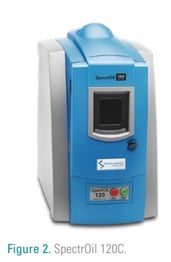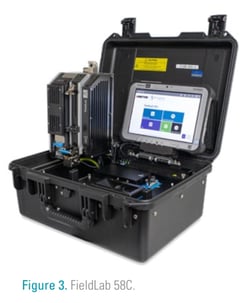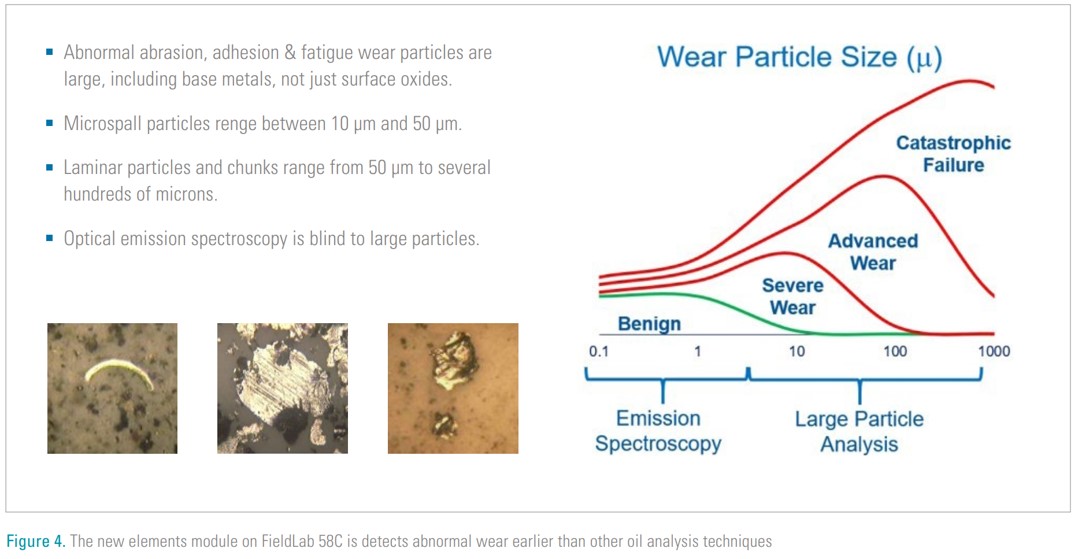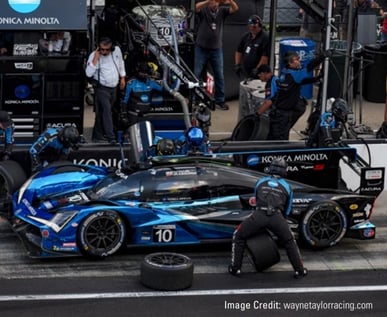Introduction
AMETEK Spectro Scientific’s on-site oil analysis tools have enabled Honda Performance Development to support WTR Andretti and Meyer Shanks ARX-06 race cars to the podium.
Honda Performance Development (HPD) faced a formidable challenge during the Rolex 24-hour endurance race in January 2023.
Their most advanced ARX-06 GTP (Grand Touring Prototype) race cars, which would be racing competitively for the first time with new engine hybrid technology, and a new IMSA-approved renewable fuel.

Background
Mating a 671hp (500kW) 2.4L twin turbocharged V6 engine to a Bosch hybrid battery drive and new transmission meant that engine and gearbox wear needed to be constantly monitored throughout the race.
A new racing fuel with a high ethanol content can also lead to unexpected issues, primarily excessive fuel dilution, which, if left unchecked, would result in viscosity loss, leading to premature
cylinder and crankcase wear. With engines pushed to the redline during the race, accelerated failure due to wear can occur in minutes. Replacing engines midway through the race, if required,
jeopardises the driver and team standings. Onsite oil analysis tools provide the extra data for the trackside engineers to compile into their Race plan.
The first sign of trouble emerged during the practice sessions, when HPD’s technical team noticed irregularities in fuel analysis and abnormal engine wear patterns. Upon further investigation, it was revealed that the race cars were experiencing higher-than-normal levels of fuel dilution in the engine oil, affecting overall performance and reliability.
Onsite Oil Analysis For Trackside Support 
HPD turned to Ametek Spectro Scientific for an effective trackside testing solution a few years back and was well prepared for the 2023 Rolex 24 at Daytona.
Ametek Spectro Scientific, celebrating its 40th anniversary, has been a leader in developing onsite oil analysis solutions for customers such as military, race teams, and diverse industries who require transportable but high-performance analysis tools specifically for in-service lubricant analysis.
The demands for a workable solution would:
- Be robust, avoiding the need for solvents and gases
- Be high performance, accurate and fast
- Detect ferrous and nonferrous wear by element for signs of problems
- Monitor physical parameters as needed to support why wear is occurring
Solutions

HPD developed an innovative approach to monitor the extreme conditions of a 24-hour duration race.
A SpectrOil 120C was the choice for trackside support teams because of its consistency, ease of use, and fast response on a 2 ml sample. Sub-ppm results for wear metals, additives, and contaminants are uploaded to the engineering race management systems as soon as results are generated, providing excellent predictive data related to engine performance.
The next generation solution – FieldLab 58C was also introduced to the trackside.
One of the core features of the device is the capability to measure all the severe (>4 micron) wear particles by elemental analysis. These wear particles serve as early indicators of abnormalities in engines and gearboxes.
FieldLab 58C also has the capability to look at the chemistry and viscosity, which is not only a great indicator for fuel dilution, but also the integrity of the lubricants.
Furthermore, the FieldLab 58C stands out due to its:
- Rugged and robust design
- No need of solvents
- Storability
- Onboard diagnostics for actions taken right away
These features collectively render the FieldLab 58C an ideal tool for on-site oil analysis by the race team

Race Outcome
The Daytona race in January served as the ultimate proving ground for HPD’s innovations. The GTP race cars, now equipped with the optimized oil formulation and engine calibration, demonstrated exceptional performance, and reduced fuel dilution.
equipped with the optimized oil formulation and engine calibration, demonstrated exceptional performance, and reduced fuel dilution.
The technical The Daytona race in January served as the ultimate proving ground for HPD’s innovations. The GTP race cars, now equipped with the optimized oil formulation and engine calibration, demonstrated exceptional performance, and reduced fuel dilution.
The technical solutions implemented by HPD not only addressed the immediate challenges, but also contributed to an overall improvement in the reliability and longevity of the race cars
Conclusion
Honda Performance Development’s success in overcoming the engine wear and fuel dilution challenges at Daytona showcased the team’s resilience, technical expertise, and commitment to pushing the boundaries of performance.
Onsite oil analysis solutions enhance HPD’s ability to identify and address complex issues in real-time, ultimately contributing to its continued success in the competitive world of motorsports.


